Last Updated on March 24, 2024 by Vinson Lozano
What is a lockout fork?
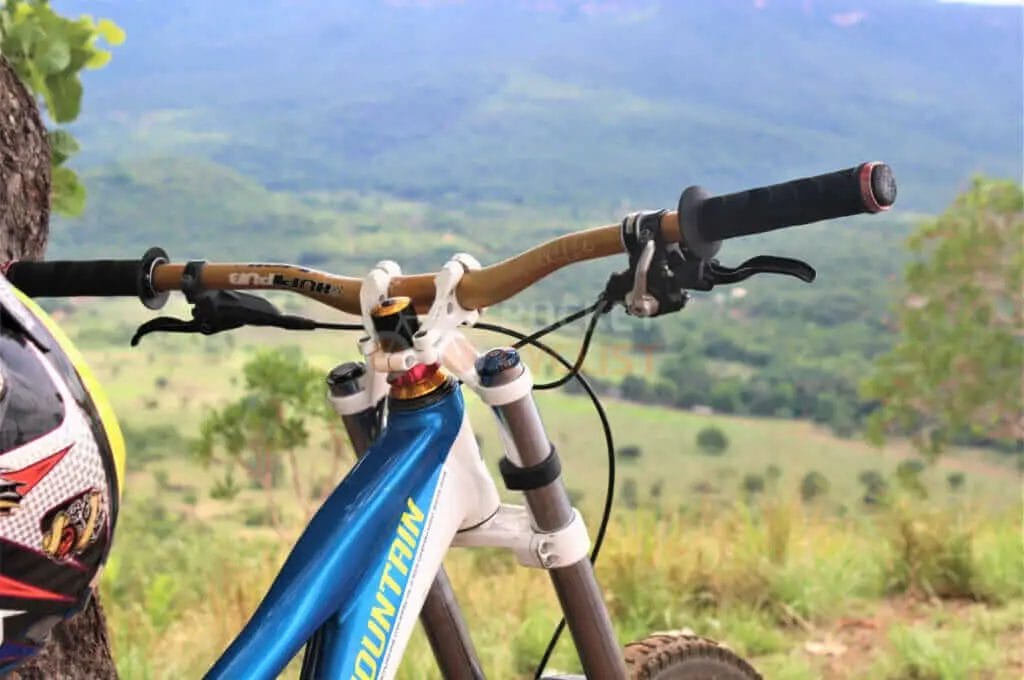
A lockout fork is a feature found on mountain bikes that allows the rider to lock the front suspension fork in a rigid position, preventing it from compressing and rebounding. This means that the fork remains in a fixed position without absorbing any impacts or bumps during the ride. Essentially, it turns a suspension fork into a rigid fork, providing a completely stiff front end to the bike.
Why is it important for mountain biking?
The suspension lockout fork feature is important for mountain biking because it offers several benefits to riders, including:
1. Climbing Efficiency: When climbing steep inclines or riding on smooth, flat terrain, a lockout fork allows the rider to transfer more power to the pedals without any energy being lost through the compression and rebound of the suspension fork. This can result in increased efficiency and speed.
2. Better Control: On rough downhill sections or when riding over technical obstacles, a suspension fork absorbs the impact and helps to maintain traction and control. However, on certain sections of the trail where the rider wants more precise handling, such as tight turns or steep descents, the lockout fork provides a rigid front end, giving the rider more control and responsiveness.
3. Energy Conservation: By utilizing the lockout fork when it is not needed, riders can conserve energy and reduce fatigue over long rides. This is particularly useful during endurance races or multi-day rides where conserving energy becomes crucial.
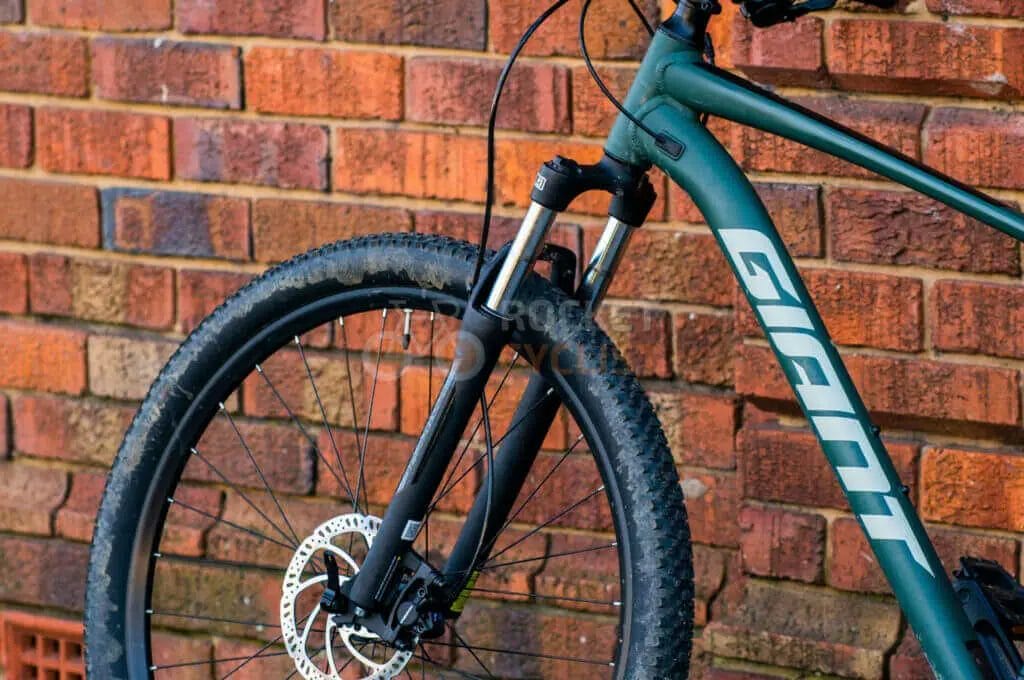
In conclusion, a lockout fork on a mountain bike is a valuable feature that provides greater versatility and control to riders. Whether it’s for climbing efficiency, better control, or conserving energy, the lockout fork option is a must-have for serious mountain bikers.
How Does a Lockout Fork Work?
Explanation of the mechanism
A lockout fork is a feature found on mountain bikes that allows the rider to lock the front suspension fork in a rigid position, essentially turning it into a rigid fork. The mechanism of a lockout fork involves a switch or lever that can be easily accessed by the rider while riding.
When the switch is engaged, it activates a mechanism inside the fork that prevents the fork from compressing and rebounding, effectively locking it in place.
This mechanism typically involves a hydraulic or mechanical lockout system that restricts the flow of oil or causes a mechanical lock to keep the fork from moving. By locking out the fork, the rider can minimize the amount of movement in the front suspension, which can help improve efficiency during climbs or when riding on smooth terrains.
Benefits of using a lockout fork
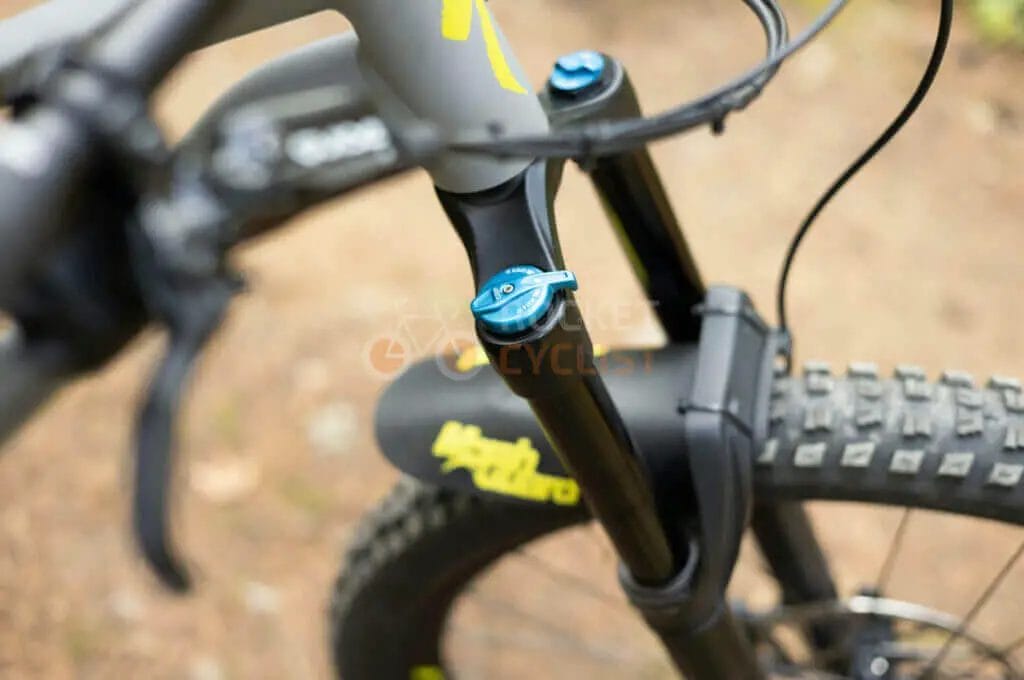
The use of a lockout fork on a mountain bike can offer several advantages to riders, including:
1. Increased pedaling efficiency: When riding on flat or smooth terrains, the compression and rebound of the front suspension fork can absorb some of the rider’s pedaling power. By locking out the fork, the rider can transfer all of their pedaling energy directly to the drivetrain, resulting in increased pedaling efficiency and speed.
2. Improved climbing performance: Climbing steep gradients requires maximum power transfer to the rear wheel. By locking out the front suspension, the rider can maintain better traction on the rear wheel by preventing weight transfer to the front, resulting in improved climbing performance.
3. Enhanced control and stability: In certain situations where stability and control are crucial, such as on technical descents or when riding at high speeds, a locked-out fork can provide increased stability and precise steering. This can help riders navigate tricky sections with greater confidence and control.
4. Customizability: Many lockout forks offer adjustable levels of compression and rebound damping. This allows riders to fine-tune the performance of their suspension fork to suit their riding style and preferences.
It is important to note that a lockout fork should not be engaged when riding on rough or technical terrain, as the front suspension is necessary to absorb impacts and provide traction. The lockout feature is best utilized when riding on flat or smooth terrains, climbing, or during situations where maximum efficiency and control are desired.
Overall, a lockout fork is a valuable feature that adds versatility to a mountain bike, allowing riders to optimize their bike’s performance for different terrains and riding conditions.
Types of Lockout Forks
There are several types of lockout forks available for mountain bikes, each offering their own advantages and features. These include:
1. Manual lockout forks:
Manual lockout forks are the most common type of lockout forks and require the rider to manually adjust the lockout feature. This is done by turning a dial or flipping a switch located on the fork. Manual lockout forks are simple to use and typically offer a firm lockout with minimal suspension movement.
2. Remote lockout forks:
Remote lockout forks feature a handlebar-mounted control that allows the rider to adjust the lockout feature without taking their hands off the handlebars. This type of lockout fork is popular among riders who frequently switch between open and locked positions while riding.
3. Electronic lockout forks:
Electronic lockout forks are the most advanced type of lockout forks and utilize electronic mechanisms to control the lockout feature. These forks often integrate with a suspension control system and can be adjusted on the fly using a remote control or smartphone app. Electronic lockout forks offer precise control and can be customized to suit the rider’s preferences.
Each type of lockout fork has its own unique advantages and it’s important to choose the one that best suits your riding style and preferences.
Popular Brands and Models
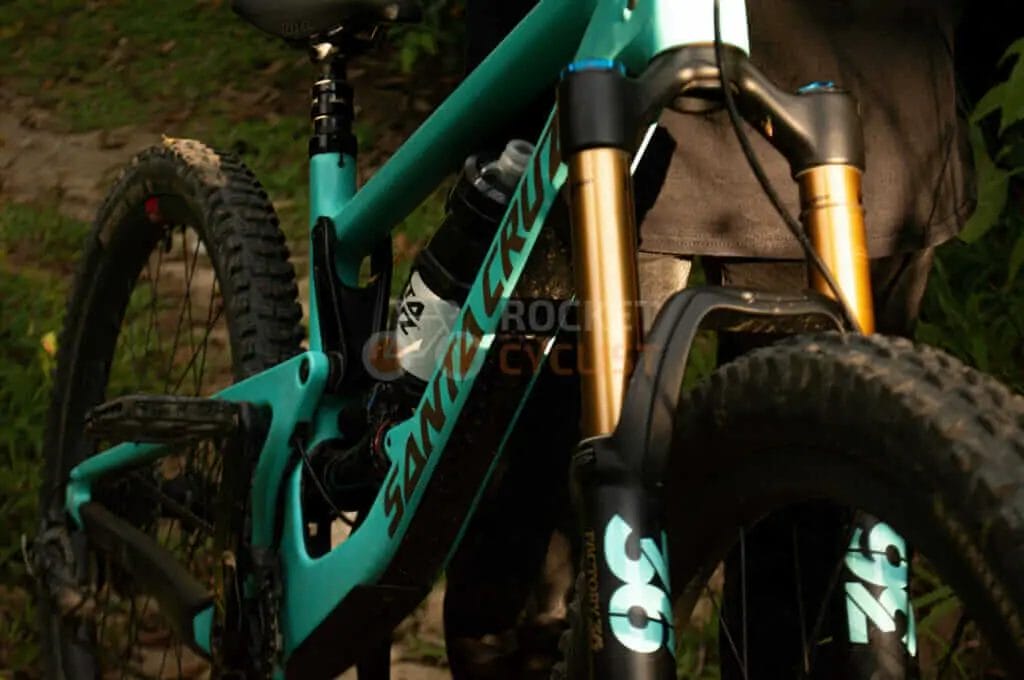
Overview of lockout forks from different brands
When it comes to lockout forks for mountain bikes, several popular brands offer reliable and high-performance options. Here are some of the leading brands and their lockout fork models:
1. Fox Racing: Fox Racing is well-known for its suspension forks, including the Fox 32 Step-Cast and the Fox 34 Factory. These forks feature a lockout mechanism that allows riders to switch between fully active suspension and a rigid fork feel for more efficient climbing.
2. RockShox: RockShox is a trusted name in the mountain biking industry, offering a range of lockout forks such as the RockShox SID and the RockShox Pike. These forks provide excellent control and adjustability, allowing riders to fine-tune their suspension for different terrains and riding styles.
3. SR Suntour: SR Suntour is known for producing affordable yet reliable suspension forks. Their lockout forks, such as the SR Suntour XCR and the SR Suntour Raidon, offer impressive performance and are often found on entry-level and mid-range mountain bikes.
4. Manitou: Manitou is a brand that focuses on innovative suspension technology. Their lockout forks, like the Manitou Markhor and the Manitou Minute, feature advanced damping systems and adjustable lockout mechanisms to enhance performance on the trails.
Comparison of features and performance
Here’s a quick comparison of some key features and performance aspects of lockout forks from different brands:
| Brand | Model | Travel (mm) | Adjustability | Weight (grams) | Lockout Mechanism |
|---|---|---|---|---|---|
| Fox Racing | Fox 32 Step-Cast | 100-120 | Rebound, | 1,345 | Hydraulic Remote |
| Compression | Lockout | ||||
| RockShox | RockShox SID | 80-120 | Rebound, | 1,485 | Twist Lockout |
| Compression | |||||
| SR Suntour | SR Suntour XCR | 100-120 | Preload, | 2,600 | Manual Lockout |
| Rebound | |||||
| Manitou | Manitou Markhor | 100-120 | Rebound, | 1,950 | Remote Lockout |
| Compression |
These are just a few examples of popular lockout forks from different brands. The right choice will depend on factors such as your riding style, budget, and specific preferences.
For more information on mountain bike lockout forks, you can visit the respective brand websites.
Choosing the Right Lockout Fork for Your Mountain Bike
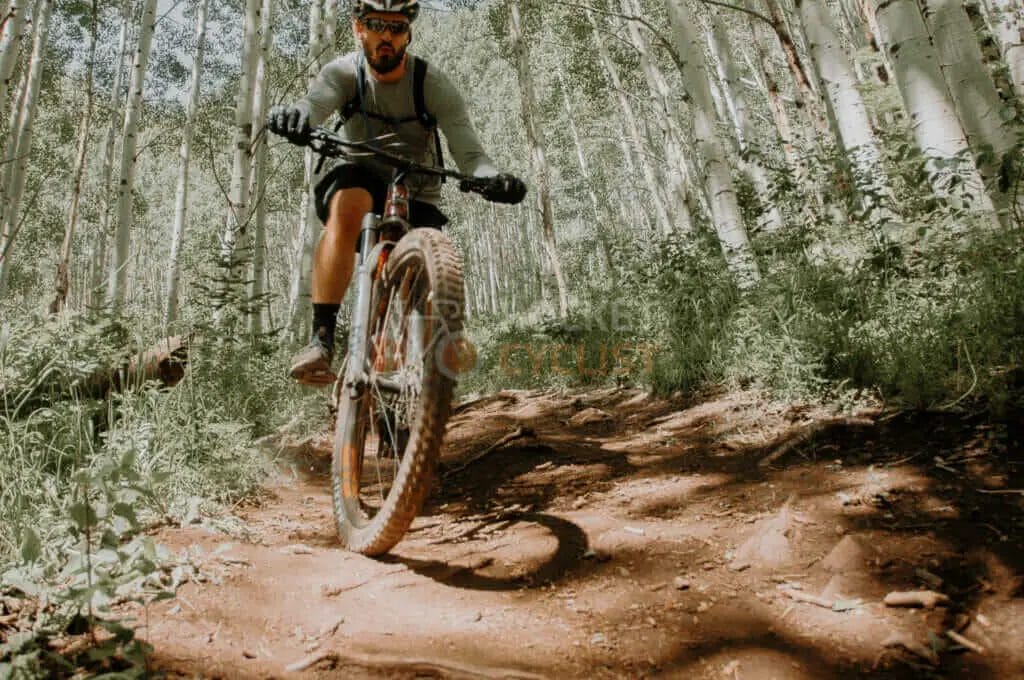
When it comes to mountain biking, having the right equipment can make a significant difference in your riding experience. One important component to consider is the lockout fork. But what exactly is a lockout fork, and how do you choose the right one for your mountain bike? Let’s find out.
Considerations for selecting a lockout fork
When choosing a lockout fork for your mountain bike, there are a few factors to consider:
1. Type of Suspension: Lockout forks come in different types of suspension, including air, coil, or hybrid (combination of air and coil). Each type has its advantages and disadvantages, so it’s important to choose based on your riding preferences and the type of terrain you’ll be riding on.
2. Travel: The travel of a lockout fork refers to the maximum distance it can compress and extend. The appropriate travel for your bike depends on the type of riding you’ll be doing. Cross-country riders may prefer shorter travel, while downhill riders may opt for longer travel.
3. Adjustability: Look for a lockout fork that offers adjustability options, such as rebound damping and compression damping. This allows you to fine-tune the fork to match your riding style and terrain.
Matching the lockout fork to your riding style and terrain

When selecting a lockout fork, it’s important to match it to your riding style and the terrain you’ll be riding on. Here are some recommendations:
1. Cross-Country Riding: If you enjoy long rides on smoother trails and prioritize efficiency and speed, a lockout fork with shorter travel and lighter weight would be ideal. Look for a fork with adjustable damping to provide a responsive and efficient ride.
2. Trail Riding: For riders who enjoy a mix of climbs, descents, and challenging terrain, a lockout fork with medium travel and adjustable damping would be suitable. This type of fork provides a balance between efficiency and control.
3. Downhill Riding: Downhill riders typically require long-travel forks to handle rough and technical terrain. Look for a lockout fork with longer travel, adjustable damping, and robust construction to handle the demands of downhill riding.
Remember to consider your skill level, the aggressiveness of your riding style, and the specific characteristics of the trails you’ll be tackling when choosing a lockout fork for your mountain bike.
By understanding the considerations for selecting a lockout fork and matching it to your riding style and terrain, you can enhance your overall mountain biking experience and ensure optimal performance on the trails.
Installing and Setting up a Lockout Fork
Step-by-step guide for installation
- Start by removing the front wheel of your mountain bike. This will give you easier access to the fork and make the installation process smoother.
- Depending on the type of lockout fork you have, you may need to remove the top cap or adjuster knob to access the internals of the fork.
- Carefully insert the lockout mechanism into the fork, following the manufacturer’s instructions. Ensure that all components are properly aligned and securely fastened.
- Reinstall the top cap or adjuster knob and tighten it to the manufacturer’s recommended torque specification.
- Replace the front wheel and ensure that it is securely attached to the fork.
Tips for adjusting the lockout fork for optimal performance
- Start by setting the lockout to the fully open position and test the fork’s responsiveness on a trail. Adjust the compression damping to find the desired level of firmness for your riding style.
- Experiment with different settings to find the right balance between comfort and efficiency. A fully locked-out fork can improve pedaling efficiency on smooth surfaces, while a partially open setting can provide better traction on technical terrain.
- It’s a good idea to carry a small multi-tool with you on rides so that you can make on-the-go adjustments to your lockout fork.
- Regularly clean and lubricate the lockout mechanism to ensure smooth operation and prevent any issues from arising.
Installing and setting up a lockout fork on your mountain bike can significantly improve your riding experience, providing better control, comfort, and efficiency on various terrains. Make sure to follow the manufacturer’s instructions and regularly maintain your fork to keep it performing at its best.
Maintenance and Care
Proper maintenance practices for lockout forks
To ensure optimal performance and longevity of your lockout fork on a mountain bike, it’s important to practice proper maintenance. Here are some key maintenance practices to keep in mind:
1. Regular Cleaning: Clean your lockout fork regularly to remove dirt, debris, and any build-up that may affect its performance. Use a mild detergent or bike-specific cleaner and a soft brush to gently remove any grime.
2. Lubrication: Apply lubrication to the moving parts of your lockout fork, such as the seals and stanchions, to prevent them from drying out or experiencing excessive friction. Use a silicone-based lubricant or a lubricant specifically designed for suspension components.
3. Inspection: Regularly inspect your lockout fork for any signs of damage, such as leaks, scratches, or worn-out parts. Address any issues promptly to prevent further damage and ensure the safety of your ride.
Common problems and troubleshooting
While lockout forks are generally reliable, they may encounter some common problems. Here are a few issues you may come across and some troubleshooting tips:
1. Fork Not Locking Out: If your lockout fork is not engaging or locking out properly, check if the lockout lever is fully engaged. Sometimes the lever may get stuck or become loose during rides. Ensure it is in the correct position to activate the lockout.
2. Fork Stuck in Locked Position: If your lockout fork is stuck in the locked position and does not unlock when you adjust the lever, there may be internal issues with the lockout mechanism. In this case, it’s best to consult a professional bike mechanic for further inspection and repair.
3. Fork Adjustments Not Working: If you are unable to make adjustments to the compression or rebound settings of your lockout fork, check if the adjustment dials or knobs are damaged or worn out. In some cases, they may need to be replaced.
Remember that proper maintenance and regular inspections are key to keeping your lockout fork in top condition. If you are unsure about any issues or if you encounter more significant problems, it’s always recommended to seek professional assistance from a bike mechanic.
Lockout Forks vs. Non-Lockout Forks
When it comes to choosing a fork for your mountain bike, you may come across the terms “lockout forks” and “non-lockout forks.” Here’s a comparison of their performance and benefits to help you make an informed decision:
Comparison of performance and benefits
Lockout Forks:
- Lockout forks allow riders to lock the fork in a rigid position, minimizing the suspension movement.
- They are ideal for smooth and flat terrain, such as pavement or uphill climbs, where suspension movement is unnecessary and can reduce pedaling efficiency.
- Lockout forks provide a more efficient transfer of power from the rider to the bike, resulting in improved climbing performance and speed on smooth surfaces.
- They offer a firmer and more responsive front end when locked, allowing for better control and handling on rough terrain.
Non-Lockout Forks:
- Non-lockout forks have active suspension that continuously absorbs impacts and provides a smoother ride.
- They excel in technical and challenging terrain, such as rocky descents and rough trails, where suspension travel is crucial for absorbing bumps and maintaining traction.
- Non-lockout forks offer enhanced comfort and control by soaking up vibrations and impacts, reducing rider fatigue and improving overall ride quality.
- They provide maximum traction and control on uneven surfaces, allowing for better handling and cornering performance.
Pros and cons of each option
Lockout Forks:
- Pros:
- Improved pedaling efficiency on smooth surfaces.
- Enhanced control and handling when locked.
- Ideal for road or uphill climbs.
- Cons:
- Limited suspension travel, which may reduce comfort and traction on rough terrain.
- Less effective in absorbing impacts compared to non-lockout forks.
Non-Lockout Forks:
- Pros:
- Active suspension for better comfort and traction on rough terrain.
- Improved ride quality and reduced fatigue.
- Excellent for technical descents and challenging trails.
- Cons:
- Reduced pedaling efficiency on smooth surfaces.
- Potentially more weight and complexity compared to lockout forks.
Overall, the choice between lockout forks and non-lockout forks depends on your riding style, terrain preferences, and personal preferences. If you primarily ride on smooth surfaces and prioritize pedaling efficiency, lockout forks may be a suitable option. On the other hand, if you frequently tackle technical terrain and value comfort and control, non-lockout forks are likely the better choice.
Remember to consider factors such as the type of riding you do, the terrain you encounter, and your budget when making a decision.
Real-world Reviews and Experiences
Feedback from mountain bikers using lockout forks
Mountain bikers who have used lockout forks have provided valuable feedback about their experiences with this feature. Here are a few real-world reviews:
1. Increased Efficiency: Many riders have praised lockout forks for their ability to increase efficiency on climbs. By locking out the fork, riders can minimize energy loss and maintain better traction on steep uphill sections.
2. Improved Control: Several mountain bikers have noted that lockout forks provide enhanced control on technical descents. By reducing fork movement, riders can have a more stable and predictable ride, especially on rough terrain.
3. Customizable Suspension: Lockout forks often come with adjustable settings that allow riders to fine-tune their suspension according to their preferences and the trail conditions. Cyclists have found this feature valuable in achieving the perfect balance between comfort and efficiency.
4. Lightweight Design: Lockout forks are generally designed to be lightweight, which is advantageous for riders looking to reduce overall bike weight and enhance agility on the trails.
5. Smooth Transition: Many riders have lauded the smooth transition between locked and unlocked modes on lockout forks. This convenience allows for quick adjustments on the go, without disrupting the flow of the ride.
It’s important to note that individual experiences may vary, and the effectiveness of lockout forks can depend on factors such as bike setup, rider preference, and trail conditions. Nonetheless, these reviews indicate the overall positive impact of lockout forks on mountain biking performance and enjoyment.
Conclusion
Choosing the right lockout fork for your mountain biking needs
In conclusion, a lockout fork is a valuable feature for mountain bikes that allows riders to adjust the suspension system according to their preference and trail conditions. By locking out the fork, riders can effectively turn their mountain bike into a rigid bike, providing greater efficiency and control on smooth surfaces or when climbing. When unlocked, the fork provides the necessary suspension travel to absorb shocks and impacts when riding on rough terrain.
When choosing a lockout fork for your mountain bike, consider the following factors:
1. Suspension Type: Decide whether you want an air or coil-sprung fork. Air forks are typically lighter and offer better adjustment options, while coil-sprung forks are often more affordable and durable.
2. Adjustability: Look for a lockout fork that offers adjustable rebound and compression settings. This allows you to fine-tune the fork’s performance based on your riding style and preferences.
3. Travel: Consider the amount of suspension travel needed for your riding style and the type of trails you frequent. Longer travel forks are better suited for aggressive downhill riding, while shorter travel forks are more efficient for cross-country and trail riding.
4. Brand and Reputation: Research reputable brands that are known for producing high-quality lockout forks. Look for user reviews and ratings to gauge the performance and reliability of the fork.
Remember that a lockout fork is just one component of a mountain bike’s overall suspension system. It is important to consider the compatibility of the fork with your bike’s frame and other suspension components.
Overall, a lockout fork can significantly enhance your mountain biking experience by providing greater control and efficiency on a variety of terrains. Whether you’re a beginner or an experienced rider, choosing the right lockout fork can greatly improve your ride quality and overall performance.
Frequently Asked Questions
Common queries and answers about lockout forks
Here are some common questions that individuals often have about lockout forks on mountain bikes:
Q: What is a lockout fork?
A: A lockout fork is a feature found on mountain bikes that allows the rider to lock the suspension fork in a more rigid position. This can be beneficial when riding on smooth surfaces or climbing steep hills, as it reduces energy loss from suspension movement.
Q: How does a lockout fork work?
A: Lockout forks typically have a lever or switch that the rider can engage to stiffen the suspension. When the lockout is engaged, the fork becomes more rigid, limiting or preventing any movement in the suspension.
Q: When should I use the lockout feature?A: You should use the lockout feature on your fork when riding on smooth surfaces or climbing steep hills. By locking out the suspension, you can improve pedaling efficiency and prevent energy loss from suspension bobbing.
Q: Can I use the lockout feature on rough terrains?A: While the lockout feature is primarily designed for smoother terrains, it can also be used on moderately rough terrains. However, it is important to note that using the lockout feature on very rough terrains can result in less control and a harsher ride.
Q: Are lockout forks necessary?A: Lockout forks are not necessary for all mountain bike riders. They are more commonly found on cross-country or trail bikes where pedaling efficiency is a priority. If you primarily ride on more technical terrains that require responsive suspension, a lockout fork may not be as important.
Q: Do all mountain bikes have lockout forks?A: No, not all mountain bikes have lockout forks. The inclusion of a lockout feature often depends on the specific type and purpose of the bike. Higher-end cross-country or trail bikes are more likely to have lockout forks, while downhill or enduro bikes may not prioritize the feature.


